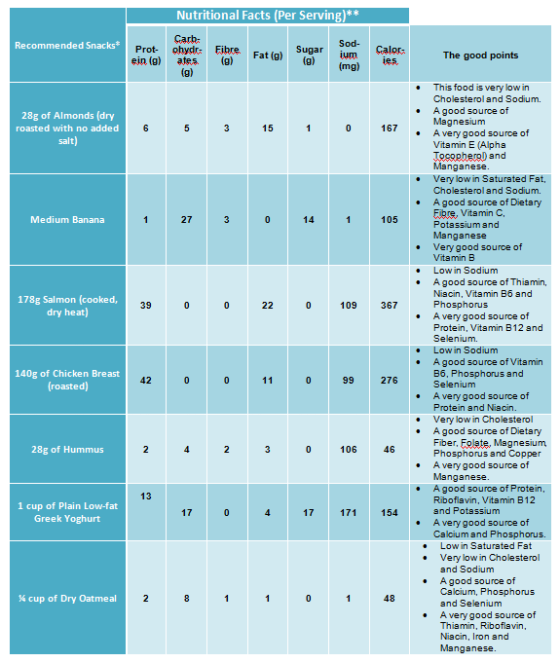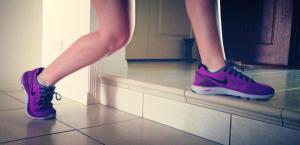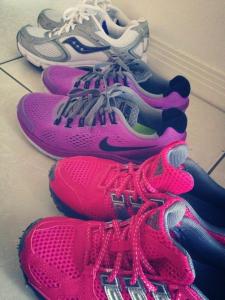I hate running. It’s too much effort. I can’t get out of bed. I always get a stitch in my side. There are too many hills in my suburb. It’s too hot today. It’s too cold. It’s a bit windy. It’s raining. I’m pretty much allergic to my own sweat.
Is this you? If it is, HealthyU is here to help you stop making excuses. We know that a good run is exactly what you need and as you will discover soon, exactly what you will want. We want to show you how to run like a pro and eat like a pro too.
So why should you run?
We have compiled several very convincing reasons to why you should run that you may not have thought about.
- Running makes you smarter! One study found that students doubled their reading scores and increased their maths scores by up to 20x just by exercising for 25 minutes before class each day. They have found that exercise not only increases blood flow to the brain, but it stimulates the release of neurotransmitters. Thus, working wonders for your problem solving abilities (Viadero, 2008). So why not go for a quick morning run before Uni to help get your blood flowing and your brain firing?
- Running can improve your quality of sleep. A study at the University of Milan found that physical activity can have a positive effect on sleep quality and the circadian rhythm of activity (Montaruili, Roveda, Calogiuri, La Torre, & Carandente, 2009).
- Running can help you get abs! Yes, running engages your core, and it hurts a lot less than crunches! Harvard Medical School says that having a strong flexible core is important for posture, balance and stability, and a healthy back. However, to develop abs you need to reduce your body fat through diet and aerobic exercise. So no matter how many crunches you do, you won’t get abs unless you reduce your belly fat and what better way to do it than running – a high-calorie burning activity (Harvard Medical School, 2012).
Do you need extra motivation?
Here’s my top tips:
Tip 1. Get a running buddy.
I think everyone needs a running buddy because a friend is a much better motivator than an alarm clock. Back in high school I used to run in the mornings with a friend. She lived down the road from me, so we used to meet at the corner of our street at 6am. If one of us didn’t arrive we would phone them and force them to get out of bed. After just a 30-minute run 3-4 times a week, we both noticed a difference. We both noticed that we felt more awake at school after our runs, despite the fact we were getting an hour less sleep each day. Not only did it help my skin clear up, I generally felt better about myself and more ready to tackle the day.
Tip 2. Spice up your shoe wardrobe.
If you’re a bit of a fashion junkie like me, I suggest buying a fabulous pair of running shoes to make you feel great. I love the look of the “Nike Free Runs” and if the name is any indication, they seem perfect for running! Beautiful looking running shoes may be expensive but that’s a motivation to use them, right?
This is Keira from HealthyU’s collection:
Tip 3. Think about the reward at the end.
Everyone loves food and the great thing about running is there is a wide-variety of healthy, yummy options you can have post-workout. But remember the reward is also your health.
Run like a Pro
Professional runner, Christine Luff (2013), says that you should always warm up and warm down when running. She recommends starting with a brisk walk then changing to an easy jog for several minutes. After your run, Luff says to walk or slowly jog for a further 5 minutes.
Luff recommends that beginners start out running at “conversational pace” (ie. at a pace slow enough to keep up a conversation with a fellow runner) to avoid injuries. According to Luff, beginners should use the run/walk approach, and should not “increase [their] weekly mileage by more than 10% per week”.
When running your arms should be at a 90 degrees, your posture should be straight and your shoulders level.
If you’re prone to getting stitches, Luff recommends that you take “deep belly breaths” while you run. She says many beginner runners have the misconception that you breath in only through your nose. Luff emphasises that you should breath in through both your nose and mouth to provide your lungs with enough oxygen.
Eat like a Pro
What to eat pre-run:
What you need to eat before a run really depends on how long you plan to run. Sports dietician Pamela Nisevich Bede (n.d.) says that if “you’re exercising for up to 1 hour at an easy effort, it’s okay to run on empty”, but she recommends having a small snack about 30 minutes before your run to keep your energy levels high. Carbohydrates and protein will help you stay energized.
Here are some of her suggested snacks:
Less than 1 hour run (should be eaten 30 minutes before running):
- Cup of low-fibre cereal with ½ cup of skim milk
- 2 fig cookies
- 3 graham crackers with 1 tsp of honey
For longer runs (should be eaten 60-90 minutes before running):
- 1 medium banana and 1 tbs of nut butter
- 1 bagel with nut butter and 1 tbs of jam
- Peanut butter and banana sandwich on whole-grain bread
- 3 ounces of deli turkey with flour tortilla and 1 cup of veggies
For more great snacks visit:
What to eat post-run:
I now want to suggest the best snacks to eat post-run to replenish the body’s resources. Remember food is fuel! All of the snacks listed below are natural foods that are extremely quick and easy to prepare.
 *Recommendations from Allen (n.d.) **Data from Nutitiondata.self.com
*Recommendations from Allen (n.d.) **Data from Nutitiondata.self.com
Now that you’re ready to run, it’s really important that you keep motivated and set yourself challenging but realistic goals. Professional runner and author, David Dack (n.d.), says that it only takes four weeks to form a habit. So after running on a consistent basis for 4 consecutive weeks, you’ll reap the rewards running has to offer. Remember to eat like a pro and train like a pro – your only competition is yourself.
Reference List:
Allen, K. (n.d.). 10 Foods that are Good to Eat After Running. Retrieved from: http://health.howstuffworks.com/wellness/food-nutrition/facts/10-foods-good-to-eat-after-running.htm
Condé Nast. (n.d.). Nutrition Facts. Retrieved from: http://www.nutritiondata.self.com
Dack, D. (n.d.). How to Improve Your Running Stamina With These Tips. Retrieved from: http://www.muscleprodigy.com/how-to-improve-your-running-stamina-with-these-3-tips-arcl-2499.html
Harvard Medical School. (2012). The real-world benefits of strengthening your core. Retrieved from: http://www.health.harvard.edu/healthbeat/the-real-world-benefits-of-strengthening-your-core
Luff, C. (2013). 7 Key Running Tips for New Runners. Retrieved from: http://running.about.com/od/getstartedwithrunning/tp/runningtips.htm
Montaruili, A., Roveda, E., Calogiuri, G., La Torre, A., & Carandente, F. (2009). The sportsman readjustment after transcontinental flight: a study on marathon runners, J Sports Med Phys Fitness, 49(4), 372-81.
Nisevich Bede, P. (n.d.). 16 Healthy (and Yummy) Pre-Run Meals and Snacks. Retrieved from: http://www.runnersworld.com/the-starting-line/16-healthy-and-yummy-prerun-meals-and-snacks?page=single
Viadero, D. (2008). Exercise Seen as Priming Pump for Students’ Academic Strides, Education Week, 27(23), 14-15.
Related articles
- Running Sucks! And Why I’m Doing It Anyway (mydiaryentry.com)
- What To Eat After Exercise (salusfitness.ca)
- Running is the BEST Form of Exercise (olivetorun.com)

